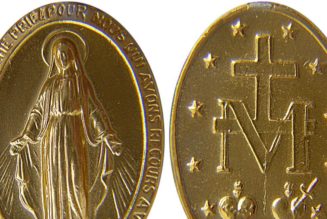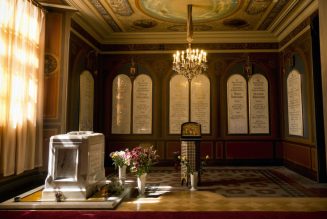ROME – I’ve said before that a compelling history of the Catholic Church could be written in the form of an Italian cookbook, and on this holiday Monday I’ll prove the point through a dish chosen essentially at random.
Sunday lunch is sacrosanct here in Italy, the pivot point of every week, and the idea is to prepare special meals that transcend the everyday. Over the more than a year now we’ve been in various forms of a lockdown, I’ve tried making pretty much every Sunday lunch I know, so this week I was running low on ideas.
I decided to google pranzi di Domenica migliori, “best Sunday lunches,” to see if I could find something new, and lo and behold there it was: Pasta alla genovese, a classic of the southern Italian kitchen I’d heard about but never tried.
Genoa usually makes one think of pesto, but despite the name, this dish has nothing to do with the northern port city. It originated far to the south in Naples, and its roots run deep … there’s a Latin cookbook from the 13th century that contains a sort of rudimentary recipe for it.
Like so many Italian dishes, the concept is simple, but the execution is tricky.
You begin with a couple carrots, a couple celery stalks, and a lot of onions – if you’re using medium onions, you want about five or six. You chop the carrot and celery very finely, then quarter each onion lengthwise and slice those quarters in half, ending up with eight pieces. You then sauté the veggies in abundant oil, along with some bay leaves (I also added a bit of garlic and red pepper into the oil at the start, since the flavor tends to be fairly sweet at the end.)
Once the sauté is ready, you add five or six large chunks of meat – either a lean beef or, as I used, pork shoulder. Add salt and pepper and brown the meat, then cover the skillet and let it simmer on low heat for about three hours, stirring occasionally. After three hours you remove the meat, and what’s left is an exquisite brownish puree. Cook it for about another hour uncovered, raising the heat a bit, and stirring in some white wine – the wine’s acidity will balance the sweetness of the reduced onions, and it also keeps the sauce liquid.
Tradition says you should serve the finished sauce over ziti pasta, which is typical of Naples, but if you can’t find it, either penne or rigatoni will work equally well. As a bonus, the meat you took out of the sauce is now tender and delicious, and if you make some potatoes or other side dishes to go with it, you’ve got yourself a perfect two-course feast.
Here’s the connection with church history.
I was curious as to why this dish is called “genovese” since its origins lie about 440 miles to the south. As with so many things in Italy, I discovered there is no one commonly accepted explanation. Some believe it’s because there were cooks from Genoa in Naples in the fifteenth century, others believe it was a Neapolitan chef whose last name (or nickname) was simply Genovese.
However, the theory I’m partial to goes like this.
Today’s Swiss Guards are the last remnants of what was once a massive presence of Swiss mercenaries on Italian soil, in some cases fighting for the French monarchy and in others for various dynasties in Naples, in addition to the papacy. At their peak, the Swiss had 8,000 men under arms in Naples alone, comprising the backbone of the kingdom’s fighting force.
Since cooks follow armies the way night follows day, there was also a robust presence of Swiss cooks in Naples, many of whom hailed from Geneva. As it happens, the Geneva kitchen at the time was well known for its heavy use of onions, especially in slow-cooking dishes blended with meats.
The theory goes, therefore, that the “genovese” in pasta alla genovese is actually a corruption of ginevrese, the Italian word for someone from Geneva. As the Italians put it, se non è vero, è ben trovato, roughly meaning, “If it’s not true, it still sounds good.”
The irony is that while all these Swiss troops were in Italy on behalf of allegedly Catholic monarchs, they spent a great deal of their time fighting fellow Swiss who were on the payrolls of rival Catholic potentates. The French fought the Bourbons, the Papal States fought the French, and the Bourbons fought the Papal States, all at various times, and all employing their Swiss mercenaries.
Today about 38 percent of the Swiss population is Catholic, but rates of Mass attendance and other measures of religious practice are exceedingly low. There was a time, however, when the fates of Catholic empires rose and fell on the backs of the Swiss, and those colorful uniforms sported today by the Swiss Guard are a picturesque reminder of the point.
Here endeth the lesson: Eat enough Italian food, and you can save the expense of a Ph.D. in church history. It’s also, let’s face it, a far more appetizing way to get an education.
Follow John Allen on Twitter at @JohnLAllenJr.
Join Our Telegram Group : Salvation & Prosperity













